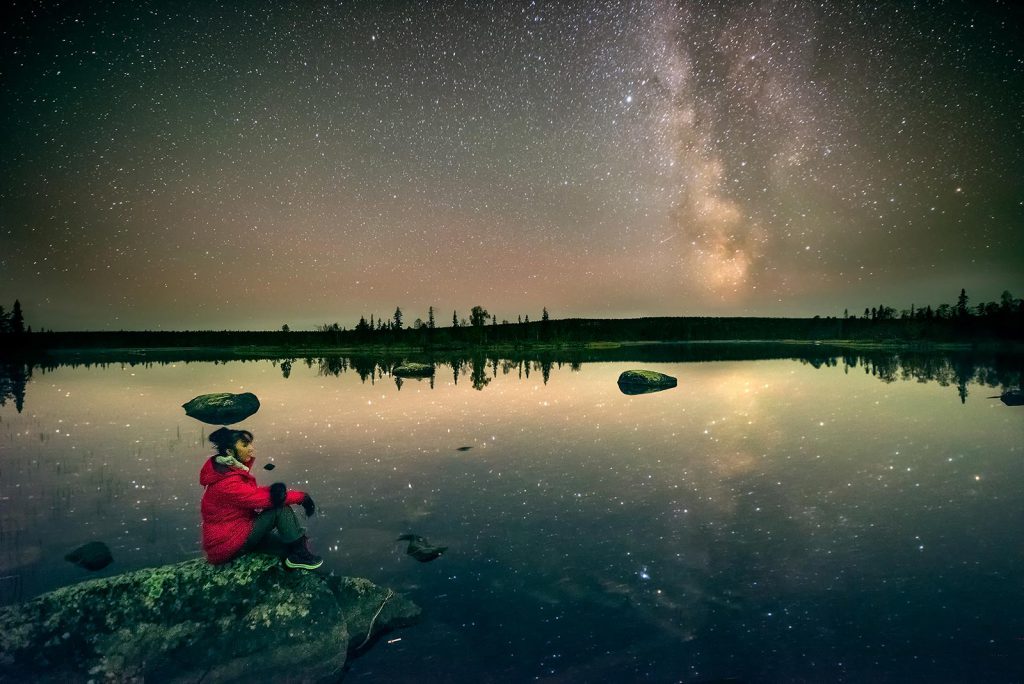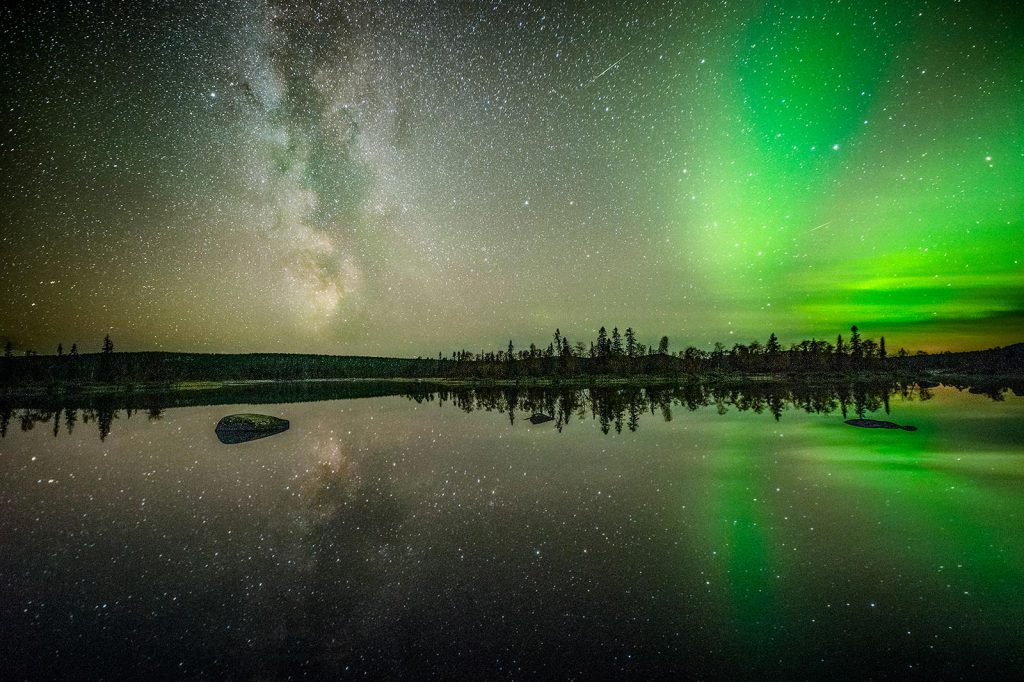The Milky Way is our own galaxy and small island in the universe. In cosmological terms, it’s a fairly ordinary spiral galaxy with a diameter of about 100,000 light-years.
Astronomers estimate that it contains between 200 and 400 billion stars. The Andromeda Galaxy is our neighbor, and together with about 40 other galaxies, we form a small neighborhood in the universe called the Local Group, which in turn joins other galaxy groups to form the Virgo Supercluster, consisting of around 10,000 galaxies. These are almost incomprehensible magnitudes for humans, yet just a small suburb in the cosmic community.
The name ‘Milky Way’ likely originates from ancient Norse mythology and also exists in Icelandic as ‘Vetrarbrautin’. It’s believed to come from weather forecasters who claimed they could predict the coming winter based on the appearance of the Milky Way. In other languages, the name typically includes the word ‘milk’, probably derived from a tale about the god Hercules in Greek mythology.

On a truly dark starry night without moonlight and light pollution, you can see the Milky Way stretching across the celestial dome. It’s easy to understand the impact the starry sky had on our ancestors! Experiencing the Milky Way this way is something special, and the best time in Jokkmokk is during September and October when the Milky Way’s dense center is at its highest above the horizon.
Photographing the Milky Way is a challenge for astronomy enthusiast photographers, but the development of increasingly better digital cameras has made it possible in ways that weren’t available before. Jokkmokk is a fantastic place to admire the night sky thanks to very little light pollution and clean, clear air.


